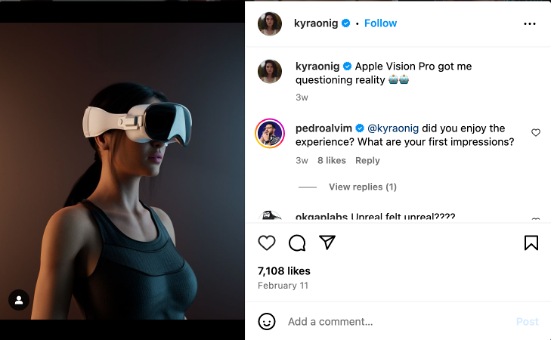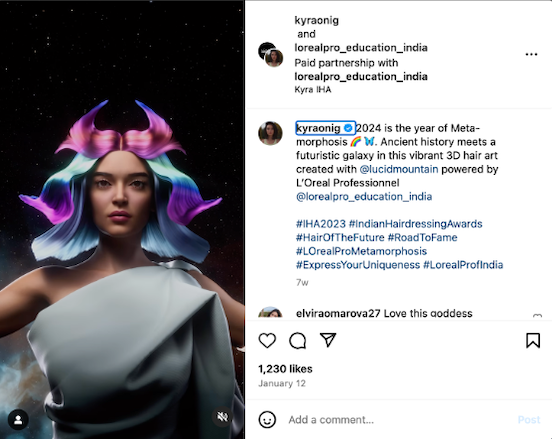The robots are coming for our jobs – and not just for any job, but for one of the most desired jobs out there: influencing.
The buzz around virtual influencers started back in 2016 when a Los Angeles start-up conjured Lil Miquela, a computer-generated fictional character whose online presence is much the same as human influencers, who has since amassed an impressive 2.6 million following.
More recently, virtual design agency FUTR STUDIOS launched Kyra, India’s first virtual influencer, who is already engaging in successful commercial partnerships with Apple and L’Oréal.


As AI image generation tools become more precise and refined, creating a virtual influencer from scratch has never been easier – over the past year, Google searches for ‘AI influencer’ and ‘how to create virtual influencer’ went up 200% and 160% respectively.
But with so many real humans online, what do virtual influencers have to offer?
Firstly, virtual influencers embody perfection without the need for filters. They can effortlessly maintain flawless and even anatomically unrealistic figures; they can have waist-length hair in one post and a buzz cut in the next. Compared to the expenses associated with human influencers (beauty maintenance, hair, and makeup, etc.), this translates to lower production costs for AI influencers while yielding similar profits.
Because they’re still a new phenomenon and even photorealistic virtual influencers still don’t look quite human, they tend to grab attention on social media feeds. Hence, they have generally high engagement rates.
But most importantly, they don’t get in trouble.
One could argue that it’s impossible to be an Internet personality and never fall into a PR disaster or two. A hot-off-the-press example is Chiara Ferragni’s fall from grace – a beloved fashion influencer who had successfully turned Internet popularity into a media empire. She recently came under fire for misleading consumers into thinking that they were supporting charities when buying her products. Her many commercial partners, from eyewear maker Safilo to Coca-Cola, rushed to distance themselves from the influencer.
So, is creating or partnering with a virtual influencer worth it?
Some industries such as gaming or fashion, which already have a foot in fantasy and the hyperreal, might be a natural fit. However, aesthetic trends lately have been swinging towards imperfection and authenticity as a response to ‘perennially online’ culture, so brands would need to tread carefully to avoid giving consumers The Hunger Games ‘Capitol vibes’.
Regardless of how believable a virtual influencer can look and sound, the most successful influencing connects humans to share solutions to a problem – something that a ‘perfect’ nonhuman entity cannot by its nature participate in.
There’s potential for virtual influencers to act as a ‘mascot’ for a brand (the GEICO Gecko, “a tiny lizard who loves insurance”, is a successful example) but when it comes to promoting real products and services, I would argue that nothing beats the endorsement of a real human.
(Image: JapanBuzz.info)






